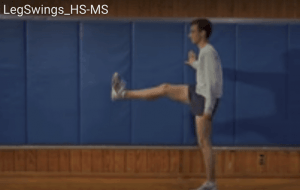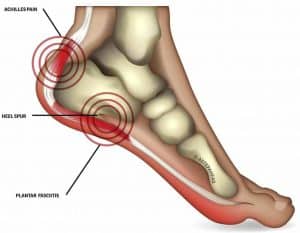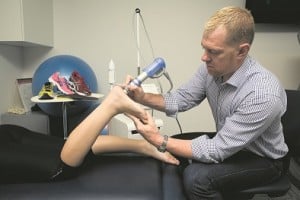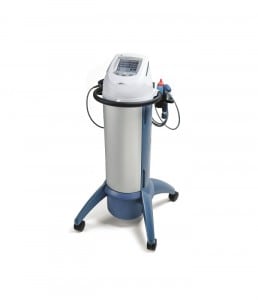
Blog
Hi guys, back again to chat about rehab and even more importantly PREHAB, and we will stick to our netball theme in light of the Diamonds stunning World Cup Victory last weekend.

2015 World Netball Cup
Allphones Arena
Gold Medal Game
Preventing injuries is of massive importance as it link directly to enjoyment of sport, and optimum performance. Lets face it, we all want to get around the court like Paige Hadley or shoot like Caitlin Basset right? Sitting on the sidelines nursing an injury takes you away from the sport you love, and away from the eyes of coaches and selectors alike.

Quite often we see resources that don’t address the specific factors that will minimise the risk of injury to our netballers! Our A Step Ahead NetballSmart blog aims to overcome this by giving you guys a simple to understand, point by point action plan for injury prevention.
Warming Up and Stretching
Preparing the body for participation in sports by warming up, will enhance the maximal performance and reduce the risk of injury! Its a sentence i often find myself repeating over and over again to my young patients. The Netball World Cup was a great example for us as a practice, with the public being able to see first hand the amount of time the best teams in the world spend on warming up before games.
Warming up improves blood flow to the heart, increases the muscle temperature and makes muscles more pliable.
Cold or less pliable or elastic muscle works harder to accommodate a given load and will be more resistant to sudden stretch. Less pliable muscle tissue is also more susceptible to overuse injuries.
Below we have come up with a simple to understand table to break down the different stages of warming up.
|
Component
|
Purpose
|
Example for Netball
|
|
Aerobic Exercise
|
Increase Body Temperature
|
2-3 Light Jogging the width of the court
|
|
Stretching
|
Increase Elasticity of Tissue
Increase Joint Range of Motion
|
Dynamic Stretches for Leg Muscles
(see examples below)
|
|
Sport Specific Exercises
|
Prepare the body for the type of activity expected
|
Short Sprinting
Changes of Direction
Passing and Shooting drills
|
Right, so now we have established our table, what does it all mean? Well, basically, the first column (component) is the breakdown of a typical warm up routine you can use before your saturday games. Once we have established we need to break our warm down into three different parts, and you want to skip the detail, we can look across the table to the examples.
First we start with a jog across the width of the court 2-3 times. We can then move into some dynamic stretches for the major legs muscles you will use for the game.
A good start is to warm up the Calf muscles, which are the big muscles at the back of the lower leg and then upwards to the Hamstring muscles. If you don’t know much about Dynamic stretching, see our short description below!
Dynamic stretching WARMING UP PRE EXERCISE
Dynamic stretches differ from the norm in that they stretch the body through movement. Instead of putting your body into a stretched position and keeping it there as the muscles relax gradually, you move quickly into and out of a position that stretches your muscles.
Dynamic Calf stretches:
Get yourself into a classic push up position. Then, hike your hips towards the ceiling or sky creating a V position with your body. Keep your back as straight as possible.
Place one foot over the back of the other ankle, and slowly but actively push your heel into the ground. Then, push your ankle upwards going up onto your toes.
Perform three sets of 10 repetitions per stretch for improved calf movement and flexibility.

Dynamic hamstring swings:
A two-part dynamic stretch for the hip flexors, hip extensors, hip adductors, and hip abductors
This involves gentle swings of the leg forwards and backwards gradually getting higher and higher each time. Around 10 to 15 swings on each leg should be enough.

We then want to move into some sort of sport specific movement, something that you will be doing regularly on the court.
We had the absolute privilege of watching the Diamonds take on Jamaica during pool play of the World cup thanks to Asics Australia. It was really interesting to watch the girls going through there physical and sport specific warm ups. These are generally done as a team, so your coach will want to have some input here.
I hope this blog has been informative, without being over the top with mumbo jumbo you don’t need. That’s always the aim, to try and get the important information out there as efficiently as possible!
My next blog will be up shortly regarding cooling down and some specific things you can do! Stay tuned for more editions of the A Step Ahead NetballSmart blog!
Aneesh Kesha
Part of the A Step Ahead Foot and Ankle care team

Blog
DeFEET your HEEL PAIN!
1. If it HURTS, stop doing it! Pain is actually your body’s way of telling you that something is wrong – listen to it! Putting pressure on a (painful) damaged muscle/tissue/bone = further damage = no improvement = ongoing pain. It’s as simple as that.

2. Nothing will change unless YOU change it. You’ve been wearing the same shoes and trying the same stretches and whatever else google has advised you since your pain started and you’re still in pain. Consult a practitioner that specialises in heel pain – not all podiatrists and practitioners do! Look for a practice with a proven track record with heel pain – different practitioners do things very differently and get very different results!
3. STICK to the plan! “It’s only when people venture off the main path in the forest that they get lost and chased through the forest in the night.” As practitioners we don’t tell you things to try and make your life difficult and play ‘let’s test if anyone will actually do this’. We do this because we KNOW it works and see it working all day every day, for those who stick to it. If we could make it easier, we would! But taking shortcuts hasn’t produced good results for our patients, and you came to us to get you pain-free.
4. Understand what is happening! Make sure you completely understand: what your condition is, what causes it, what aggravates it, WHY you are having the treatment you are and what the treatment is actually doing to and for your feet. If you don’t see a purpose to doing something, you are a lot less likely to stick to it. Not being fully informed about your condition can create uncertainty about your treatment. Ask all the questions, ask them as many times as you need, and let your practitioner help you to understand. If you get a generic answer along the lines of “It’s plantar fasciitis and you need these very hard orthotics” – Our number will be at the bottom!
5. Finally, DON’T give up! Whether you’ve just started your journey to being pain-free or have tried multiple options from different practitioners with no success, very seriously, don’t give up! We are often people 3 or 4th opinion – some have been to physiotherapists, specialists, GP’s and other podiatrists – if they haven’t had success with you, sadly you’re not alone! I have the privilege of seeing the pain levels of my patients decreasing every week until the pain is gone. Every foot is different, the causes of heel pain are different, and when this is correctly analysed, diagnosed and treated, amazing things can happen. Our treatment is VERY different!
These are my top 5 because I see these so often! It’s actually fairly unusual to see anyone who isn’t struggling with at least one of these points. But rest assured – heel pain can be defeated, you don’t have to keep battling it and letting it limit your activity and you can be completely pain-free. We have patients who regularly travel from all across Sydney NSW and even interstate to see us! Its not unusual for us to be the last of a long line of other practitioners you may have seen. Come and join our ever-growing team of pain-free patients – we’d love to help you too!

Dr Nina to the right and Shendi on the left with our patient Kimberley who beat heel pain!
A Step Ahead Foot + Ankle care
Penrith, St Marys
and soon to come to a suburb near you!

Blog, Uncategorized
If you havent come across us before you may not realise that Brenden our principal Podiatrist has for many years been considered one of the foremost experts on feet and Podiatry in Australia. He has for years been called upon to make comment as an expert. From the today show to the  Sydney morning herald to Dolly magazine!
Sydney morning herald to Dolly magazine!
This month BB is in HCF’s Fit &well magazine, just in case you don’t get a copy or cant see and read the text here it is below.
“Best foot forward
“High heels tilt your pelvis forward, throw your centre of gravity out of alignment and force your back muscles to work harder to maintain stability,” says Brenden Brown, spokesperson for the Australian Podiatry Council.
If you have lower back pain women should choose a shoe with a wide, flat heel of no higher than 2.5 centimetres and men should avoid wearing loafers and things. “Lower back pain can also be treated in some people by addressing poor foot posture with orthotic supports in shoes,” Brown says.”

Blog, Uncategorized

Heel pain treatment cuts down recovery time
Shock wave therapy is a relatively new treatment option used for musculoskeletal conditions. This treatment was initially seen in hospitals for “breaking down” kidney stones that were too large to pass. A Step Ahead Foot and Ankle care has found it particularly helpful for HEEL PAIN.
Now the technology has been modified so that the high pressured acoustic shockwaves travel through the skin to stimulate blood flow to the injured area which speeds up our own healing processes within our body for tissue repair.
A Step Ahead Foot and Ankle care were one of the first clinics in Sydney to try this effective new technology and have found it to be highly successful.
What conditions is it suitable for?
Shock wave is commonly used for musculoskeletal conditions, some examples include:
- Heel pain / plantar fasciitis.
- Achilles tendonitis / tendonosis
- Patella tendonopathy.
- Shin pain / Shin splints.
The Podiatrist at A Step Ahead Foot and Ankle care will be able to tell you if your problem is suitable for this treatment.
What does it feel like?
Pressure is pushed on the injured area with the probe. The shockwave treatment will feel a little uncomfortable like short bursts of throbbing sensations through the probe. Almost 100% of our patients while first a little hesitant have found this to be much better than first thought.
How can A Step Ahead Help you?
A Step Ahead Foot + Ankle care have had many years of experience using this technology and have become a leader in this field. With years of experience with this technology combined with almost 20 years of clinical practice experience you are in good hands
Resolution of pain is most often achieved through a combination of treatments this may include:
- Assessment of foot and leg mechanics
- Activity modification
- Footwear advice
- Orthotic therapy
- Stretching exercises
- Taping
Please call our helpful reception staff to make an appointment and be sure to mention your interest in the exciting new technology. 9673 2987 or 43322007











 Sydney morning herald to Dolly magazine!
Sydney morning herald to Dolly magazine!





 Dr Brenden’s White paper report on the “6 Reasons You Won’t Beat Heal Pain” outlines what’s stopping you from beating this and tips on how to stop it in its tracks!
Dr Brenden’s White paper report on the “6 Reasons You Won’t Beat Heal Pain” outlines what’s stopping you from beating this and tips on how to stop it in its tracks!